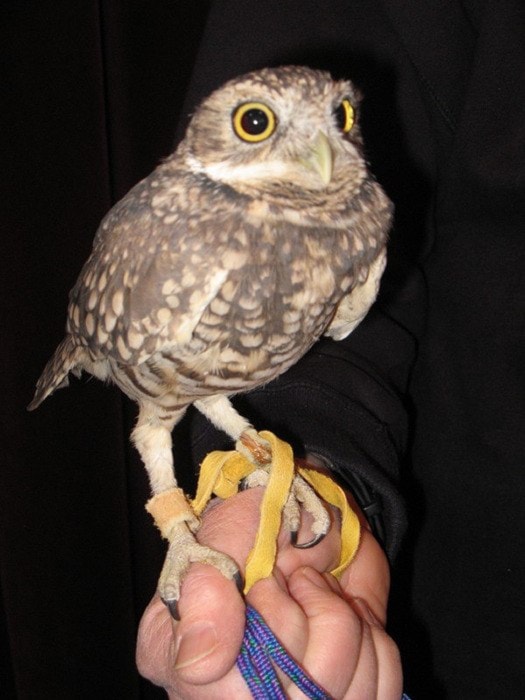Each year National Wildlife Week is celebrated at the beginning of April to honour Jack Miner, one of the founder members of Canada's wildlife conservation movement, dating back to 1947. National Wildlife Week focuses on a different theme each year; this year's theme hopes to raise awareness to save the burrowing owl habitat through conservation efforts.
Once a common sight in Manitoba, Saskatchewan, Alberta and B.C. the diminutive burrowing owls have become a rare sight. The Canadian Wildlife Federation theme highlights a species in decline due to their disappearing habitat. Burrowing owl populations have been in decline since 1976 and now only occupy 36 per cent of their original range. Once there were 3,000 breeding pairs across Canada but now they have virtually disappeared from Manitoba and B.C.
Burrowing owls are unique amongst their species being the only owls that live underground. They live in abandoned prairie dog or groundhog burrows, or gopher and badger holes, in arid land. Along with the destruction of burrows they are now losing their food supply as natural grasslands are being replaced by agricultural croplands.
In the past many crops were sprayed to control pests that provided the main diet of these owls especially grasshoppers and insects. At the moment these inquisitive little owls hang in the balance between life and death as their habitat continues to disappear being replaced by vineyards, farmland and urban development.
By drawing awareness to the burrowing owls, it is hoped that scientists will continue to study the owls and expand the conservation program already in place. There have been several successful attempts to breed some of the owls in a captive breeding program in Manitoba and B.C., creating man made burrows from flexible pipes. There are similar successful programs in the B.C. in both the Okanagan and the Fraser valley.
This fall a burrowing owl was spotted several times in the Nanoose area of Nanaimo, how it arrived at this location is a mystery. Burrowing owls are long legged owls that tend to have less dense feathers than other owls probably because they hunt both day and night. Because their prey lives on the ground they tend to stay close to home and can be seen perched on a fence post waiting to pounce on passing prey. Weighing only between125-185 grams they are approximately 20 centimetres tall. They have comical round heads and faces, and they are very distinct with white eyebrows that make them appear to glare and frown. Mottled brown feathers with white spots makes them perfectly camouflaged to blend into the desert landscape.
I have had the opportunity to study and work with burrowing owls in the Palm Springs area and they are fascinating creatures. These owls are very family orientated and look after each other. If they are above ground they always post a sentry who alerts them to danger, and the signal sends the owls scurrying underground. They have a variety of calls that allows them to communicate with each other and the young can even ward off snakes by 'hissing' like a rattle snake, their main predator.
Through education and conservation it is hoped that we can build on the success of captive breeding to reintroduce these owls back into the wild, thus protecting the survival of future generations. To celebrate National Wildlife Week and Earth Day, (April 22), M.A.R.S. is holding a Walk for Wildlife at the Courtenay Air Park on April 26 from 10 a.m. to 2 p.m. For more details www.wingtips.org or call 250 337-2021.
Sandy Fairfield is the educational co-ordinator for the Mountainaire Avian Rescue Society (MARS). The MARS column appears every second Thursday.
